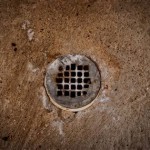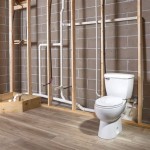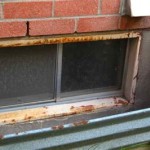What Is The Best Humidity For Your Basement?
Maintaining optimal humidity levels in a basement environment is crucial for preventing a multitude of problems related to moisture. Basements, by their very nature, are predisposed to higher humidity due to their location below ground level, where soil moisture and poor ventilation often contribute to increased dampness. Understanding the ideal humidity range and how to achieve it is essential for the long-term health of both the basement structure and its contents.
The relative humidity (RH) refers to the amount of moisture in the air compared to the maximum amount of moisture the air could hold at a given temperature. It's expressed as a percentage. High humidity fosters mold growth, promotes wood rot, and corrodes metal, while extremely low humidity can lead to dry air, which can damage wooden furniture and exacerbate respiratory issues. Thus, finding the right balance is paramount.
The generally accepted ideal relative humidity for a basement falls within a range of 30% to 50%. This range minimizes the risk of mold and mildew while also preventing the air from becoming excessively dry. Maintaining this balance requires awareness of the factors influencing basement humidity and the implementation of appropriate control measures.
Understanding the Factors Influencing Basement Humidity
Several factors contribute to the humidity levels in a basement. Identifying these sources is the first step toward effective humidity management. External sources, such as groundwater seepage and rainwater intrusion, are significant contributors. The porous nature of concrete and foundation walls allows moisture to penetrate the basement. Inadequate drainage systems around the foundation can exacerbate this issue, leading to increased water pressure against the walls and subsequent seepage.
Internal sources also play a crucial role. Activities such as showering, laundry, and cooking, even when performed in other parts of the house, can increase humidity levels that then migrate to the basement. Moreover, condensation on cold surfaces, such as pipes and concrete walls, is a common problem, particularly during warmer months when outside air enters the cooler basement environment.
Ventilation, or the lack thereof, is another significant factor. Basements often have limited natural ventilation, which prevents the exchange of humid indoor air with drier outdoor air. This lack of air circulation allows moisture to accumulate, leading to elevated humidity levels. The type of flooring and wall coverings used in the basement can also impact humidity. Certain materials, such as carpets and some types of insulation, can trap moisture, further contributing to the problem.
Seasonal changes also play a role. Humidity levels tend to be higher during the summer months, increasing the likelihood of moisture-related issues in basements. Conversely, during the winter, the air is typically drier, which can lead to lower humidity levels in the basement. However, even in winter, indoor activities can still contribute to elevated humidity.
Identifying Signs of High Humidity in a Basement
Recognizing the signs of high humidity is essential for addressing the problem promptly and preventing potential damage. Visible signs include condensation on windows, walls, and pipes. This moisture can range from a slight dampness to standing water, depending on the severity of the humidity issue. Mold and mildew growth are other telltale signs. Mold often appears as dark or discolored patches on walls, floors, and ceilings, while mildew may manifest as a white or gray powdery substance.
A musty or damp odor is another common indicator of high humidity. This odor is often associated with mold and mildew growth and can be particularly noticeable in enclosed spaces. Peeling paint, wallpaper, or drywall is also a sign that moisture is present. The moisture weakens the adhesive, causing these materials to detach from the walls.
Wood rot, particularly in wooden support beams or furniture, is a serious consequence of prolonged exposure to high humidity. The moisture provides a breeding ground for fungi that break down the wood fibers, weakening the structure. Corroded metal, such as pipes, appliances, or tools, is another indication of excessive moisture. The humidity accelerates the rusting process, leading to deterioration of metal surfaces.
In addition to these visible signs, there are also less obvious indicators. An increase in insect activity, such as silverfish or dust mites, can signal high humidity, as these pests thrive in moist environments. Sticking doors and windows can also be a sign, as the wood expands due to moisture absorption. Finally, respiratory problems, such as allergies or asthma, may be exacerbated by high humidity and mold growth in the basement.
Strategies for Maintaining Optimal Basement Humidity
Once the sources of humidity have been identified and the signs of high humidity have been recognized, it is possible to implement strategies to maintain optimal humidity levels in the basement. The strategies involve addressing both the sources of moisture and improving ventilation.
Addressing water intrusion is a fundamental step. This may involve repairing cracks in the foundation walls, improving drainage around the foundation, and installing a sump pump to remove excess water. Applying a waterproof sealant to the interior walls can also help prevent moisture from seeping through the concrete.
Improving ventilation is equally important. Installing exhaust fans in the basement can help remove humid air. Opening windows, when possible, can also promote air circulation, but this should only be done when the outside air is drier than the air inside the basement. A dehumidifier is often the most effective solution for controlling humidity in basements. Dehumidifiers remove excess moisture from the air, helping to maintain the ideal humidity range. The size and capacity of the dehumidifier will depend on the size of the basement and the severity of the humidity problem.
Insulating pipes and walls can help prevent condensation. Insulation creates a barrier between the cold surfaces and the warm, humid air, reducing the likelihood of condensation forming. Using moisture-resistant building materials can also help minimize humidity problems. For example, using mold-resistant drywall and flooring can prevent mold growth in the event of moisture exposure.
Controlling indoor humidity sources is also important. Ensuring proper ventilation in bathrooms and kitchens can help prevent excess moisture from migrating to the basement. Avoiding storing damp items in the basement, such as wet clothes or cardboard boxes, can also help reduce humidity levels. Regularly monitoring humidity levels with a hygrometer can help track changes and ensure that the implemented strategies are effective. A hygrometer is a relatively inexpensive device that measures the relative humidity in the air.
Regularly inspecting the basement for signs of moisture and addressing any issues promptly is crucial for preventing long-term damage. By implementing these strategies, it is possible to maintain optimal humidity levels in the basement and protect the structure and its contents from the harmful effects of excessive moisture.
Furthermore, consider the use of vapor barriers. These are thin, impermeable materials, usually plastic or foil, that are installed to prevent moisture from passing through walls and floors. Vapor barriers are typically placed on the warm side of the wall in colder climates, and on the cool side in warmer climates. Their purpose is to keep moisture from condensing within the wall cavity.
Proper landscaping around the foundation can also contribute to humidity control. Ensure that the ground slopes away from the foundation to direct water away from the basement walls. Gutter systems should be properly maintained and extended away from the foundation to prevent water from pooling near the walls.
Finally, consider the type of heating and cooling system used in the home. In some cases, a whole-house dehumidifier can be integrated into the HVAC system to control humidity levels throughout the entire home, including the basement. This is a more expensive option, but it can provide a comprehensive solution for humidity control.

How To Achieve An Ideal Basement Humidity Of 30 50

What Is The Ideal Basement Humidity Level Epp Foundation Repair

How To Achieve An Ideal Basement Humidity Of 30 50

How To Achieve An Ideal Basement Humidity Of 30 50

What Should A Basement S Humidity Be

Ideal Basement Humidity And How To Achieve It Epp Foundation Repair

Here Is The Ideal Humidity For Your Finished Basement

How To Lower Your Basement S Humidity Level

Moisture In Basements Causes And Solutions Umn Extension

The Ideal Humidity Level For Your Basement Reliable Waterproofing







